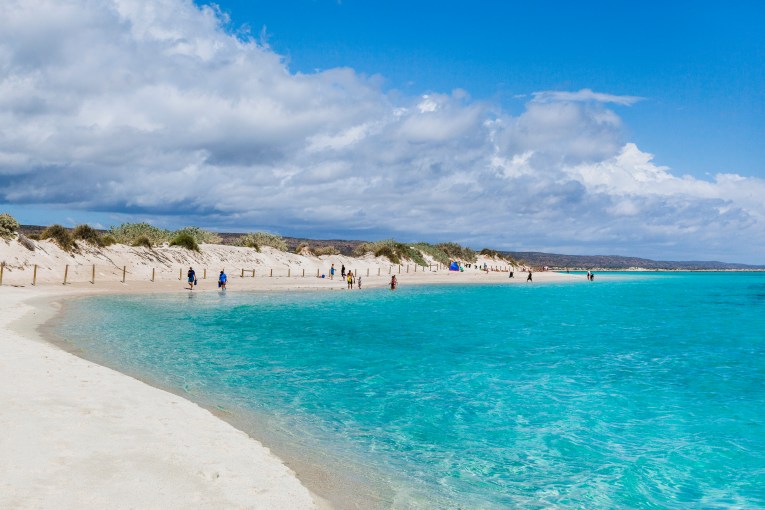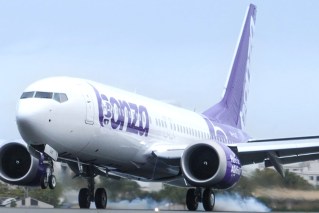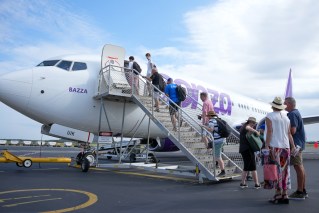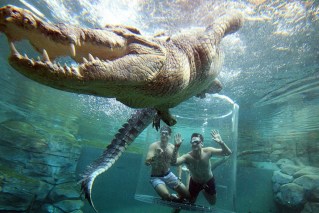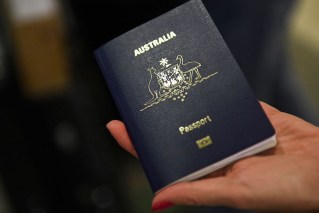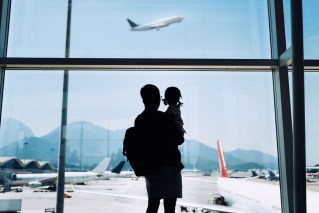What it’s like travelling with a guide dog

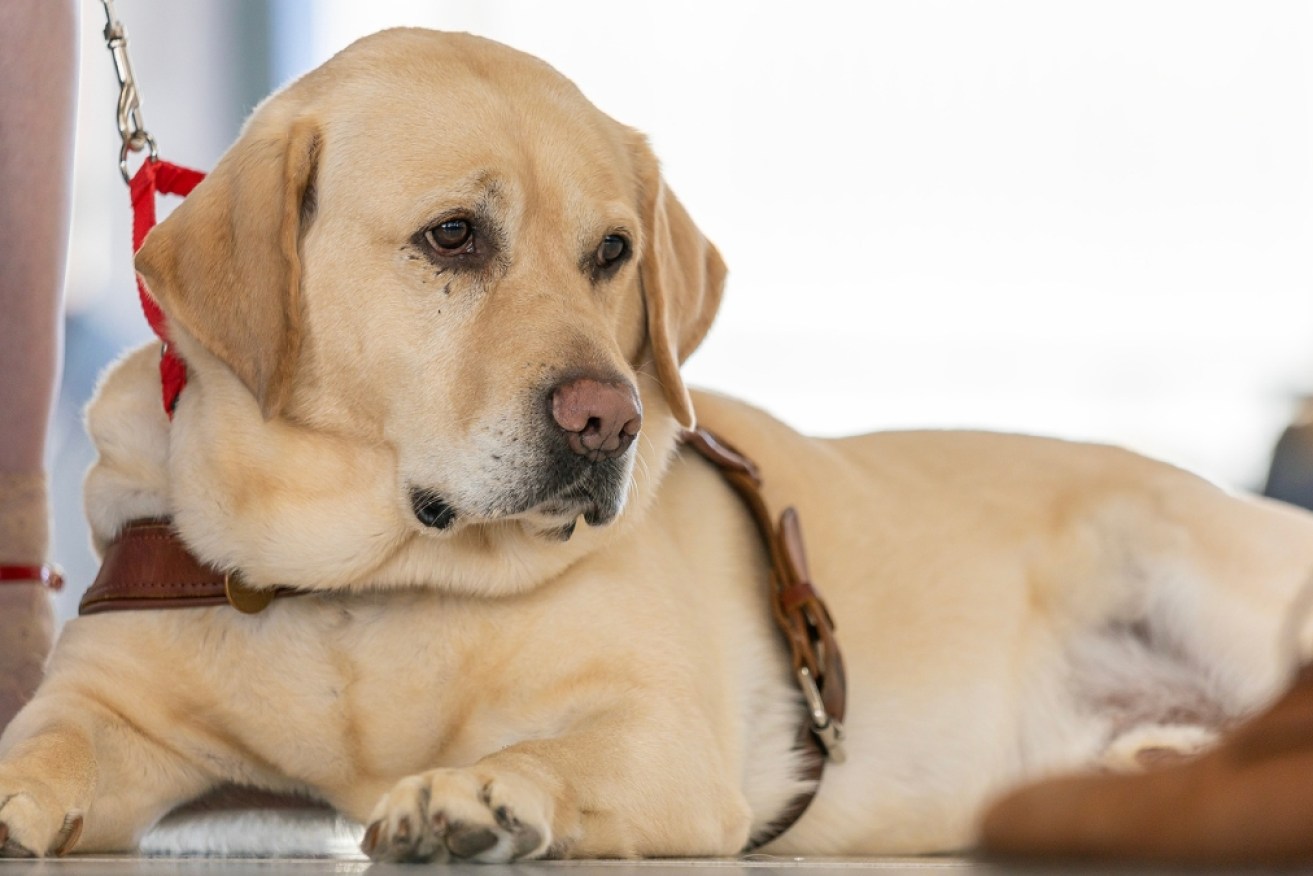
Airports can be stressful. Even if we’ve packed competently, checked in early and arrived with plenty of time to spare, it’s an environment that conjures a sense of anxiety for many of us.
The potential for delays. The scrutiny. The other passengers. It’s a melting pot of variables, out of our control, which can leave us feeling less than zen.
Now imagine navigating that with a guide dog.
Ingrid Barnes joined forces with hers – a yellow Labrador retriever named Banner – in 2019.
Since then, they’ve been on 29 flights together, purely for fun, with Noosa and Melbourne ranking as favourites. And it turns out Banner loves an airport.
“The busier the environment, the happier he is,” says Barnes, a client connections specialist from Sydney. “He really likes the challenge.”
Diagnosed at 25 with a degenerative condition called retinitis pigmentosa, she describes her eyesight as “a shrinking tunnel”.
Today, she has very little peripheral vision, no sense of depth and can’t see anything after dark.
She sees no reason why this should hamper the travel bug she caught on her very first holiday, to Greece as a baby. Still, as she explains, it does add a layer of complexity.
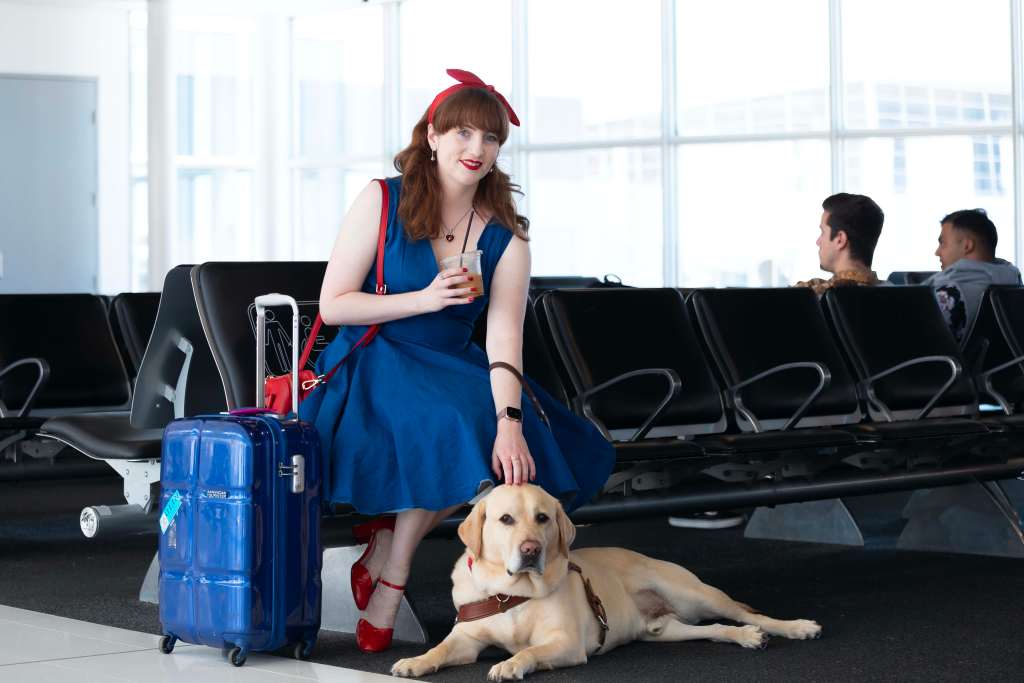
Ingrid Barnes and her assistance dog, Banner, at Sydney Airport
Planning ahead
Step one for any trip is to book a regular ticket for herself, before emailing the airline to let them know she’ll be travelling with an assistance dog.
“It’s important they know his weight, size and all his other details,” she explains. “Then they allocate him the seat next to me, for free.”
To get to the airport, they tend to order a taxi.
“I have more trouble with Uber drivers refusing to take me, even though it’s illegal to refuse a guide dog.”
Does that happen often?
“All the time. It happened to me yesterday.”
Barnes disagrees with the suggestion she could book the specific Uber Pet service.
“He’s not a pet – he’s a service dog – and it’s a more expensive service,” she points out.
“The other great thing about taxis is the disability taxi subsidy scheme, which essentially halves the price.”
Having been dropped at the kerb, she asks her six-year-old buddy to look for the entrance.
“He has a vast vocabulary. Hundreds of words. I’ll literally say, ‘Banner, find the door’. And off we go.”
Navigating the airport
Inside the terminal, Banner makes a beeline for an airline employee.
“They’re usually good at spotting us, and asking if we need help.”
The answer is always yes, as it’s not possible to check in online when travelling with a guide dog. A member of staff prints their two boarding passes and accompanies them to security.
While their luggage is scanned, Barnes walks through with her four-legged friend, and both are patted down.
“If you prefer to avoid that, you can send the dog through ahead of you and put their harness through the scanner with your bags. Then you’re pointed in the right direction, and walk through on your own, unassisted. I don’t like to let go of Banner, so I don’t go for that option. But having a choice is the important thing.”
This is often where their first delay will occur.
“I might end up waiting 10 minutes for the pat down, if the security person isn’t willing to do it because they’re afraid of the dog. It happens a lot.”
Having said that, the bigger problem is the very opposite, when people get too close.
“Banner’s reaction time is really good, so we don’t bump into anyone. More often, they bump into me, when we’re stopped. It would be helpful if people looked up from their devices.”
Then there are the dog lovers, desperate for a stroke.
“Children are the best. They always ask first, and although they’re sad when I say no, they accept it,” Barnes says.
“Adults are more likely to go for it without asking. I’ll say, ‘I’m blind. He’s working as a guide dog. Please don’t,’ and then they’ll go for it again, thinking I can’t see them.”
The flight
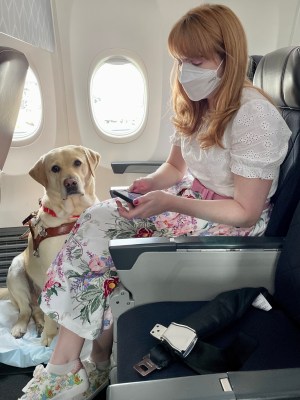
Preparing for take-off on one of the many flights they’ve taken together since pairing up.
Just like us, a pup needs a toilet break before boarding, but Service Animal Relief Stations aren’t as common as human facilities.
Some airports don’t even have one, meaning you need to take the dog outside – a situation Barnes would like to see improve.
“In America, if an airport has 10,000 passengers a day, they provide at least one service dog relief station,” she says.
“It’s just the requirement, which is great.”
With that taken care of, Barnes and Banner are generally the first passengers onto the plane.
She takes her seat and fastens his lead to the one next to her, where he sits on the floor.
The harness is removed, marking official downtime.
“It’s like travelling with a toddler. You pack water and food. I usually bring his favourite: A carrot.”
Speaking of which, Banner’s best travel trick happens on arrival at the destination.
“He can find our baggage on the carousel by smell, because I keep his food in it.”
What’s next
Though their flights together so far have all been domestic, an adventure to London is planned for mid-2024, which will include side trips around Europe, and the Taylor Swift concert at Wembley Stadium.
Barnes connected to a group called Travel Paws – a community of people keen to to share their learnings about travelling with a guide dog, and other assistance animals.
As a result, layovers are planned in Perth and Singapore, to break the trip up.
“The Singapore to London leg is the longest – 12 hours – but Banner can sleep for nine hours a night, so he should be fine. And he’s only barked twice in his life, so I don’t think he’ll bother anyone.”
Meanwhile, they’ve both been involved in a joint appeal between Guide Dogs NSW/ACT and Sydney Airport, to raise awareness around how making travel more accessible for passengers with vision impairment.
As part of this, Sydney Airport is raising funds to train a litter of five newborn guide dogs – an effort that takes two years and $50,000 for each puppy.
Look out for donation boxes and QR codes in the airport between now and January 21 – or donate online.
Karen Halbert, chief corporate affairs officer at Sydney, says: “We are thrilled to be partnering with Guide Dogs NSW/ACT, an organisation that helps make independent living and travel a reality for so many people.”









